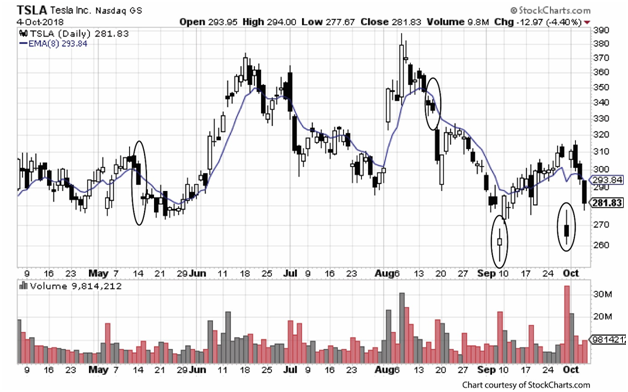
The “OOPS signal” was developed by trader and author Larry Williams. It was named for the experience among traders, upon discovering, “Oops, we lost.”
When the market opens lower than the previous day’s close, a trader places a buy-stop order above the previous day’s low price. When the market opens higher than the previous close, a sell-stop[ order is placed below the previous day’s high.
Most traders recognize that gaps from one day’s close to the next day’s open occur for any number of reasons: news, rumor, earnings, etc. However, the move often exaggerates the impact of news. You see this all the time with earnings surprises. A big gap in the price (upward for positive surprises, downward for negative) is next offset by a move back to the previous trading level. This reversal is the “Oops moment.”
|
Trading on this system is contrarian. You recognize that “the market” overall tends to follow the news, and often acts inefficiently. Rather than buying after many others have bought, or selling after others have sold, the “Oops trader” is a true contrarian, who sees the exaggerated movement and times trades to exploit the likely retracement and closing of the gap. The expected retracement not only closes gaps and corrects exaggerated price movement. With a well-timed trade, the Oops trader is able to anticipate profit-taking or loss cutting, not in response to smart market timing and moves, but to the gut reaction among “the crowd” to the gap in price. |
|
For example, look at the six-month chart for Tesla. It has been erratic and volatile throughout this period, moving between $260 on the low side and $390 on the high side. That’s an extreme range of 130 points. You can find numerous examples of an “Oops moment” on this chart. A few have been highlighted. |
|
For example, in May, price opened at about $305 and dropped the same day to under $295; then gapped lower to $285. As all of this occurred, price also moved below the t-line (in blue). Recall that this is an 8-day exponential moving average and price crossover indicates a change in sentiment. Even so, within a moment price had recovered and quickly moved up to $370 -- quite a lot of back and forth in a single month.
In the case of volatility, everything is less predictable, including even the strongest of reversal signals. So for options trading, the “Oops” might refer not to the initial signal for timing purposes, but to the entire pattern. It’s not just a matter of “Oops, we lost” but perhaps one of “Oops, the reversal was not reliable.” |




There are no comments to display.
Join the conversation
You can post now and register later. If you have an account, sign in now to post with your account.
Note: Your post will require moderator approval before it will be visible.